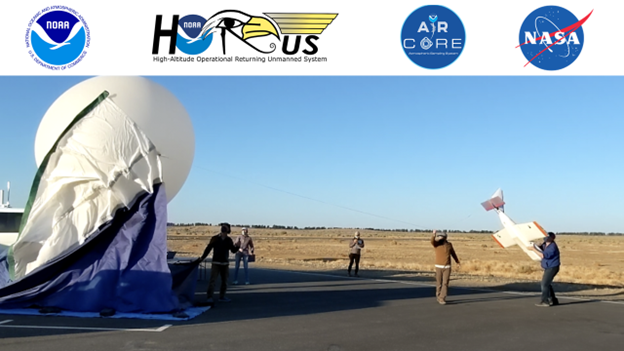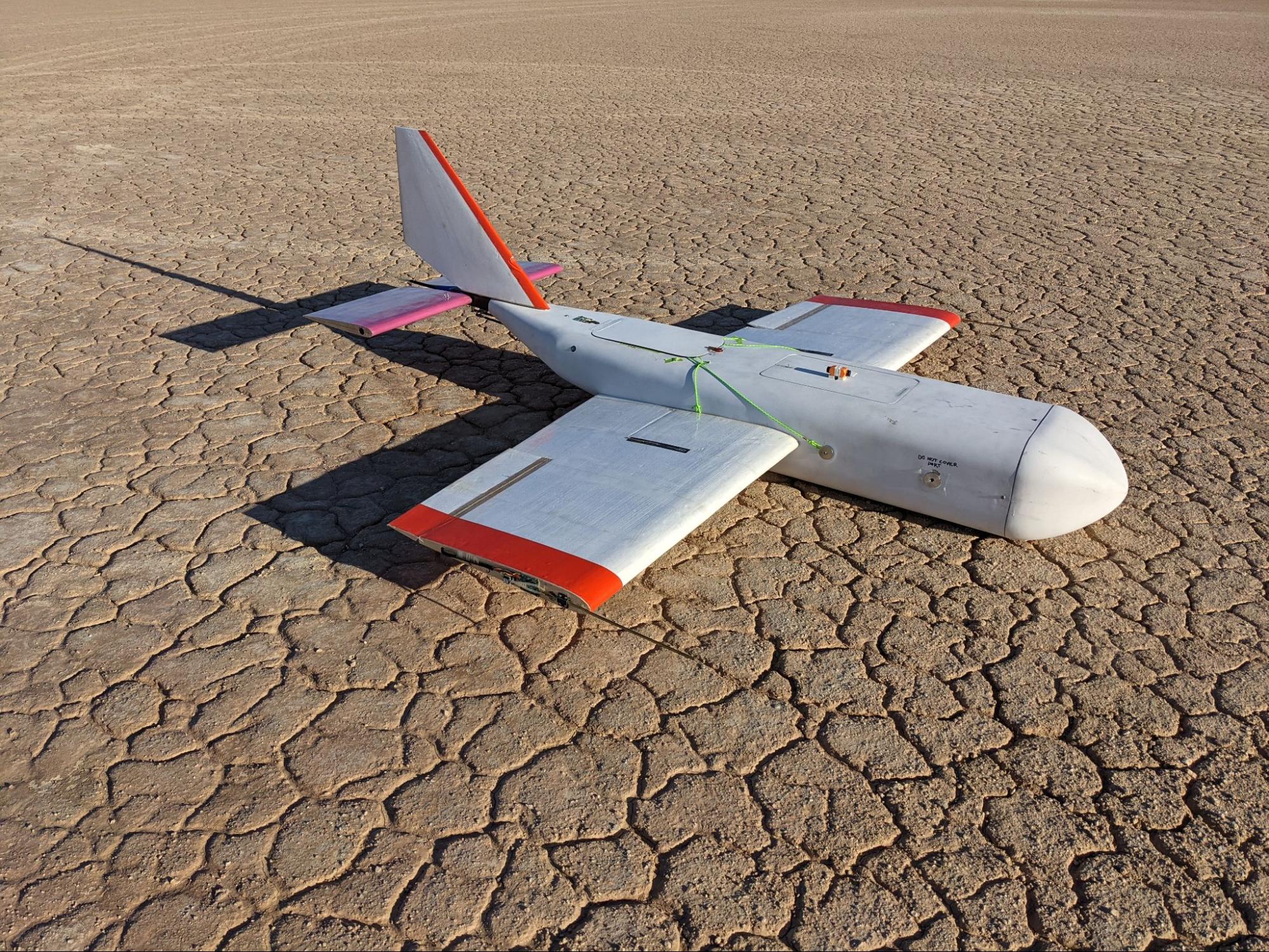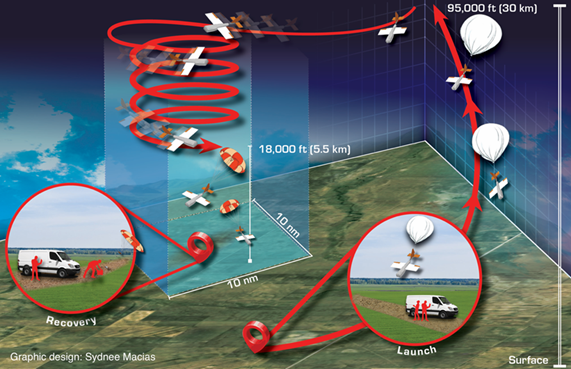GML scientists successfully test high-altitude return glider with the AirCore science package to 75,000 feet MSL
June 4, 2021

Global Monitoring Laboratory (GML) and Cooperative Institute for Research in Environmental Sciences (CIRES) scientists successfully tested a new method for high-altitude air sampling and instrument recovery from May 13-25, 2021. The field campaign at the NASA Armstrong Flight Research Center and Edwards Air Force Base, California tested the High-altitude Operational Return Unmanned System (HORUS), a 6-foot wingspan, portable, fixed-wing glider for returning the AirCore and scientific instruments from the stratosphere.
Similar to an ice core, the AirCore atmospheric sampling system collects a “core” of air vertically through the atmosphere. High-altitude balloons carry the device -- inside of the HORUS airframe -- to the upper atmosphere reaching 75,000 feet above the mean sea level (MSL), where the balloon releases the payload. The AirCore started to collect air from 72,000 feet MSL to the landing spot.

During its descent, the HORUS auto-piloted the instrumentation to a predetermined landing site via an onboard computer. Reaching speeds of more than 200 knots over the ground at the beginning of the glide phase, HORUS was able to make up for the more than 60-knot winds that it encountered at 40,000 feet during the balloon ascent. Thus, HORUS is capable ofcan bringing the scientific instrumentationinstruments from well over 75,000 feet MSL back to a location close to its initial launch site.
At 1,000 feet above ground level (AGL), a parachute was deployed, slowing the device and scientific instrumentation and enabling a soft landing. With the proven parachute deployment capability, the Federal Aviation Administration (FAA) has indicated that users do not need to acquire a waiver to “see and avoid” other aircraft, as long as HORUS is under parachute below 18,000 feet MSL.

The FAA “see and avoid” requirement for unmanned aerial systems (UAS) between 400 feet and 18,000 feet MSL is in place because small aircraft flying at this altitude range often lack the ability to detect the location and ID beacons that planes flying above 18,000 feet MSL are required to carry. However, balloons and parachutes are waived from the need to “see and avoid below 18,000 feet MSL.
With an auto-piloted glide to a predetermined location before it reaches 18,000 feet and the drift under parachute to the final landing spot, the HORUS can meet FAA requirements, save significant time for the launch crew to recover the science package, and vastly increase the number of likely places that scientists can collect data.
The success of this field campaign brings the NOAA USRTO-funded HORUS to a Technology Readiness Level of 8 out of a possible 9, indicating that it is not fully operational but has been demonstrated in the same environment required for operational deployments. It marks an exciting opportunity for all of NOAA's atmospheric research because it allows balloon-borne packages to be deployed and retrieved at the same location.
With HORUS, scientists can launch high-value science packages all over the world to collect data that improve weather and climate models, which have been limited until now because of uncertainties in winds, as well as water and terrain hazards. This model of operating balloon-borne packages opens up many other commercial opportunities outside of both academia and government research.

For questions or more information, please contact colm.sweeney@noaa.gov.
